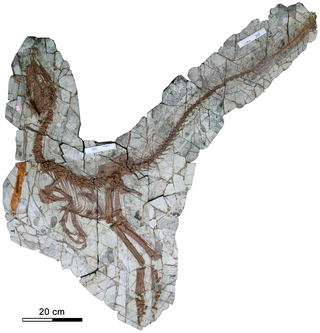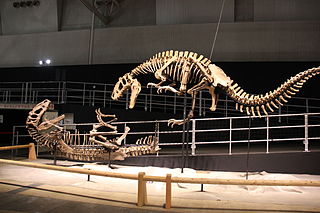Information retrieval (IR) in computing and information science is the process of obtaining information system resources that are relevant to an information need from a collection of those resources. Searches can be based on full-text or other content-based indexing. Information retrieval is the science of searching for information in a document, searching for documents themselves, and also searching for the metadata that describes data, and for databases of texts, images or sounds.
In information science and information retrieval, relevance denotes how well a retrieved document or set of documents meets the information need of the user. Relevance may include concerns such as timeliness, authority or novelty of the result.
Search/Retrieve Web service (SRW) is a web service for search and retrieval. SRW provides a SOAP interface to queries, to augment the URL interface provided by its companion protocol Search/Retrieve via URL (SRU). Queries in SRU and SRW are expressed using the Contextual Query Language (CQL).

Caudipteryx is a genus of peacock-sized theropod dinosaurs that lived in the Barremian age of the early Cretaceous. They were feathered and extremely birdlike in their overall appearance, to the point that some paleontologists think it was a bird. Two species have been described: C. zoui, in 1998, and C. dongi, in 2000.

Content-based image retrieval, also known as query by image content (QBIC) and content-based visual information retrieval (CBVIR), is the application of computer vision techniques to the image retrieval problem, that is, the problem of searching for digital images in large databases. Content-based image retrieval is opposed to traditional concept-based approaches.

Confuciusornis is a genus of basal crow-sized avialan from the Early Cretaceous Period of the Yixian and Jiufotang Formations of China, dating from 125 to 120 million years ago. Like modern birds, Confuciusornis had a toothless beak, but closer and later relatives of modern birds such as Hesperornis and Ichthyornis were toothed, indicating that the loss of teeth occurred convergently in Confuciusornis and living birds. It was thought to be the oldest known bird to have a beak, though this title now belongs to an earlier relative Eoconfuciusornis. It was named after the Chinese moral philosopher Confucius. Confuciusornis is one of the most abundant vertebrates found in the Yixian Formation, and several hundred complete specimens have been found.
Z39.50 is an international standard client–server, application layer communications protocol for searching and retrieving information from a database over a TCP/IP computer network, developed and maintained by the Library of Congress. It is covered by ANSI/NISO standard Z39.50, and ISO standard 23950.

Beipiaosaurus is a genus of therizinosauroid theropod dinosaurs that lived in Asia during the Early Cretaceous in the Yixian Formation. The first remains were found in 1996 and formally described in 1999. Before the discovery of Yutyrannus, Beipiaosaurus were among the heaviest dinosaurs known from direct evidence to be feathered. Beipiaosaurus is known from three reported specimens. Numerous impressions of feather structures were preserved that allowed researchers to determine the feathering color which, turned out to be brownish.

Scipionyx was a genus of theropod dinosaur from the Early Cretaceous of Italy, around 113 million years ago.
Isearch is open-source text retrieval software first developed in 1994 by Nassib Nassar as part of the Isite Z39.50 information framework. The project started at the Clearinghouse for Networked Information Discovery and Retrieval (CNIDR) of the North Carolina supercomputing center MCNC and funded by the National Science Foundation to follow in the track of WAIS and develop prototype systems for distributed information networks encompassing Internet applications, library catalogs and other information resources.

A number of animals are capable of aerial locomotion, either by powered flight or by gliding. This trait has appeared by evolution many times, without any single common ancestor. Flight has evolved at least four times in separate animals: insects, pterosaurs, birds, and bats. Gliding has evolved on many more occasions. Usually the development is to aid canopy animals in getting from tree to tree, although there are other possibilities. Gliding, in particular, has evolved among rainforest animals, especially in the rainforests in Asia where the trees are tall and widely spaced. Several species of aquatic animals, and a few amphibians and reptiles have also evolved this gliding flight ability, typically as a means of evading predators.
Query expansion (QE) is the process of reformulating a given query to improve retrieval performance in information retrieval operations, particularly in the context of query understanding. In the context of search engines, query expansion involves evaluating a user's input and expanding the search query to match additional documents. Query expansion involves techniques such as:
Search/Retrieve via URL (SRU) is a standard search protocol for Internet search queries, utilizing Contextual Query Language (CQL), a standard query syntax for representing queries.

Sinocalliopteryx is a genus of carnivorous compsognathid theropod dinosaurs from the Lower Cretaceous Yixian Formation of China.

Avialae is a clade containing the only living dinosaurs, the birds. It is usually defined as all theropod dinosaurs more closely related to birds (Aves) than to deinonychosaurs, though alternative definitions are occasionally used.
A concept search is an automated information retrieval method that is used to search electronically stored unstructured text for information that is conceptually similar to the information provided in a search query. In other words, the ideas expressed in the information retrieved in response to a concept search query are relevant to the ideas contained in the text of the query.

Anchiornis is a genus of small, four-winged paravian dinosaurs, with only one known species, the type species Anchiornis huxleyi, named for its similarity to modern birds. The Latin name Anchiornis derives from a Greek word meaning "near bird", and huxleyi refers to Thomas Henry Huxley, a contemporary of Charles Darwin.

Yutyrannus is a genus of proceratosaurid tyrannosauroid dinosaur which contains a single known species, Yutyrannus huali. This species lived during the early Cretaceous period in what is now northeastern China. Three fossils of Yutyrannus huali —all found in the rock beds of Liaoning Province— are currently the largest-known carnivorous dinosaur specimens that preserve direct evidence of feathers.
Contextual search is a form of optimizing web-based search results based on context provided by the user and the computer being used to enter the query. Contextual search services differ from current search engines based on traditional information retrieval that return lists of documents based on their relevance to the query. Rather, contextual search attempts to increase the precision of results based on how valuable they are to individual users.

Jianianhualong is a genus of troodontid theropod dinosaur from the Early Cretaceous of China. It contains a single species, Jianianhualong tengi, named in 2017 by Xu Xing and colleagues based on an articulated skeleton preserving feathers. The feathers at the middle of the tail of Jianianhualong are asymmetric, being the first record of asymmetrical feathers among the troodontids. Despite aerodynamic differences from the flight feathers of modern birds, the feathers in the tail vane of Jianianhualong could have functioned in drag reduction whilst the animal was moving. The discovery of Jianianhualong supports the notion that asymmetrical feathers appeared early in the evolutionary history of the Paraves.The head and hind limbs of Jianianhualong have many characteristics of primitive Troodon, but the forelimbs and pelvis have many characteristics of progressive Troodon.










